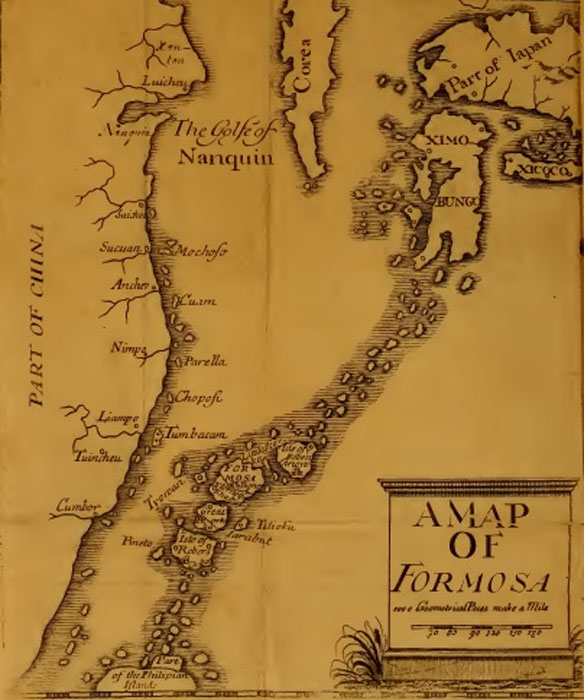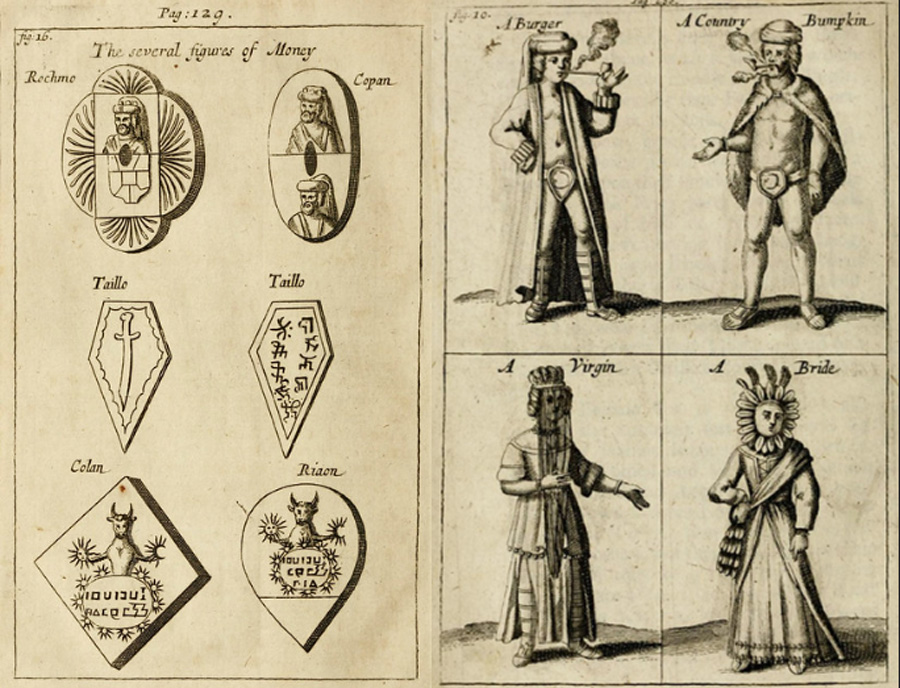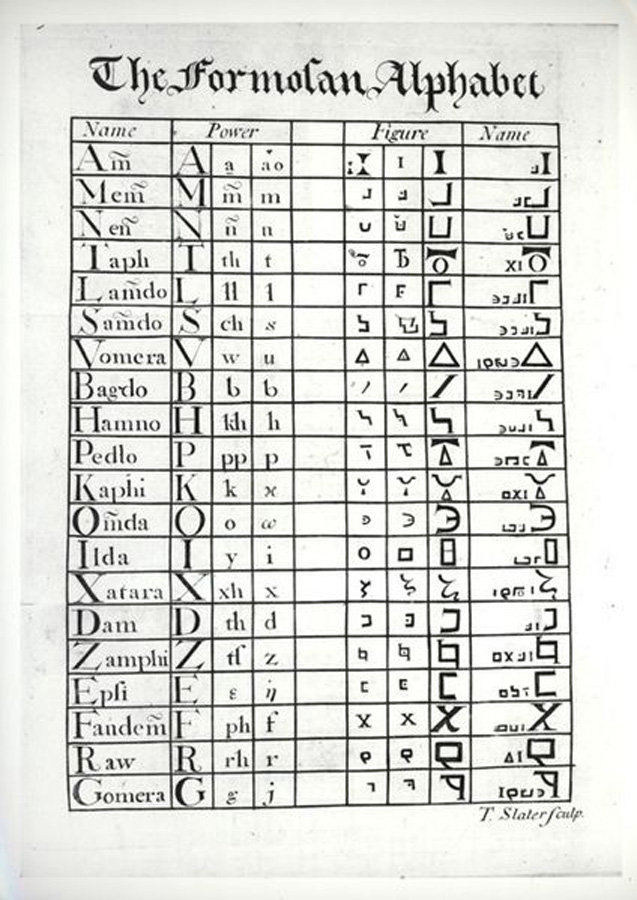In the 18th century, the people who travelled on European roads would encounter several unusual characters. However, one person stood out from the crowd and was extremely unusual: a handsome youth who claimed to come from a faraway place called Formosa (modern-day Taiwan). The blonde-haired and blue-eyed man told wild stories to those he met, such as that people in his homeland ate children. When any young person happened to be put to death, the executioner used to sell the dead bodies to eager buyers as a rare treat.
The Man from Formosa
He claimed to be a kidnap victim who had been abducted by Father de Rode of Avignon, a Jesuit. The sinister missionary, so the story goes, brought him to Europe and pressured him to get converted from paganism to Catholicism. When he resisted their attempts, he was thrown into prison. However, Psalmanazar soon escaped.
Soldiers of the Elector Count of Cologne captured him and returned him into the hands of the Catholics, but from there also, he got away. He was then captured by Dutch soldiers who tried to convert him to Calvinism. While in the Netherlands, he crossed paths with Alexander Innes, an Anglican priest who amazed him with the teachings of the Church of England.

The claims of this young man from Formosa had a few problems. For a start his skin was white, he spoke fluent Latin with a Dutch accent, and had blonde hair. However, people in the eighteenth century did not have much of an idea about the wider world. The Europeans had no clue about what a Formosan looked like.
They only knew that the land of Formosa was very distant, and the people living there undoubtedly had different customs. This man also had extremely unusual customs and, most of the time, babbled in a completely unknown language. The man worshipped the moon and the sun. He usually slept upright in a chair accompanied with a burning lamp, and ate spiced raw meat. All these behaviors made people believe in his claims.
The Rise of George Psalmanazar
George Psalmanazar was initially known as the “man from Formosa”, as he had no other names during that time period. In 1702, he arrived in Holland, where he met William Innes, a Scottish clergyman who served the English army. Innes understood the deception right away, but he saw a way to turn this to his advantage. He knew that it would benefit his career if he could present the church with an unusual convert.
Therefore, Innes persuaded the Formosan man to convert to Anglicanism, and baptized him with the name George Psalmanazar. He brought George to England to introduce him to the Bishop of London. The Bishop welcomed George with open arms, and the rest of the British High Society accepted him too. The elite gentleman and ladies treated the man as an exotic curiosity. Moreover, the Royal Society also took an interest in him.
A Convincing Performance
He soon gained a level of popularity and fame in England comparable to today’s television celebrities. Nobles, as well as rich merchants, invited him to their dinner parties, where he spoke gibberish while consuming mouthfuls of raw meat, much to their amusement.
When Psalmanazar was asked about his white skin, and his overall Dutch appearance, he told a story about the way the upper class of Formosa lived, explaining that his apartment underground away from the heat of the sun made him whiter. His performance in speaking a foreign language was his most convincing feature. He said the Formosan language had only 20 letters in the alphabet, which he might have imagined about all Asian languages. He made it impossible to pin down the dialect he spoke.
Illustrations of Formosa
After George Psalmanazar amazed London people with his different customs, colorful stories, and his exotic accent, the people became eager to know more about his homeland. He settled into his privileged position in English society, and in only two months completed a book titled “Description of Formosa”. This book sold out immediately, largely due to its rare and unusual illustrations of Formosan native clothing, beautiful architecture, and images of the cooking grills where the hearts of little boys were roasted.
He gave a description in the book’s foldout plates of the Formosan language, as well as detail on local zoology, botany, and gastronomy. The book covered every imaginable topic. It also outlined the government of the island, and its laws set down by the Emperor Meriaandanoo. It discussed the worship of the moon, the sun, and the ten stars.
After publishing his Description of Formosa, he capitalized on his fame. The sensational and intriguing glimpse at Formosan culture he appeared to give British readers was hugely popular, and he was even appointed by Oxford University as translator of religious literature into Formosan.

Odd Jobs, Opium and Coming Clean
Psalmanazar always continued from odd job to odder job. Initially, he marketed China, which he described as a white version of Japan. A few years after that, he proceeded to fan painting, and after failing to get a steady income, he then tutored people in Latin. He later entered into military service as a clerk.
Most constantly, he worked as a Grub Street hack writer and churned out encyclopedia entries, prefaces, and histories, working for a minimum wage. He wrote for 12 hours every day and sustained himself by consuming opium mixed into a pint of punch. His chosen topics were wide and varying, for example in 1732, he published a book named “A General History of Printing”.
Despite the success of Psalmanazar’s ideas, the doubts still circulated about his original identity. These suspicions became stronger, until finally, he wrote a long confession in a book titled “The Memoirs of ****, Commonly Known by the Name of George Psalmanazar”. The work was published a year after his death, in 1765.
Who Was Psalmanazar?
The truth of Psalmanazar actually remains mysterious, and the reason for his deception is still unknown. Despite his lengthy confession only a little information was given as to his original identity. In the memoir, he explained that he was originally a French Catholic. He wrote that after getting bored with his studies, he pursued the life of a vagabond as a young man. Eventually, he found that posing as a foreigner was an effective way to collect funds from sympathetic strangers.
While this confession seems more plausible than his initial wild claims as to his Formosan heritage, given his record of dishonesty, this last explanation cannot be relied upon. Ultimately, nobody knows whether this is the real truth or yet another fabrication, and the real identity of the Man from Formosa remains a mystery to this day.
Top Image: George Psalmanazar. Source: Unknown Author / Public Domain.
By Bipin Dimri
